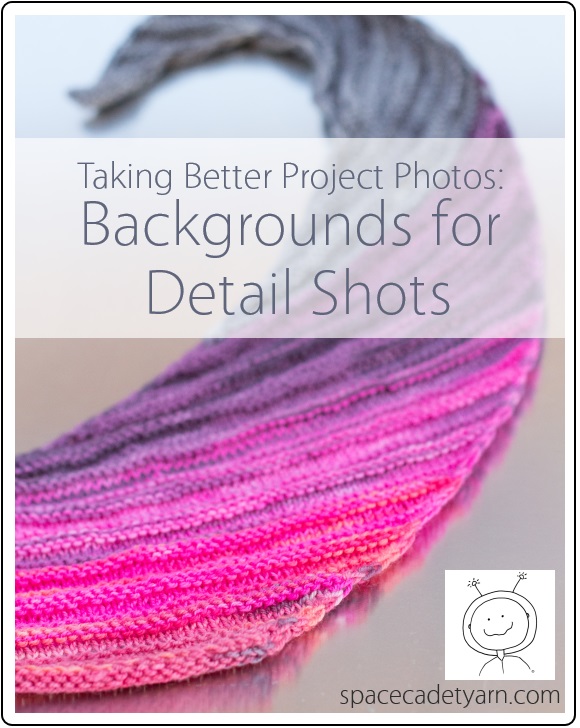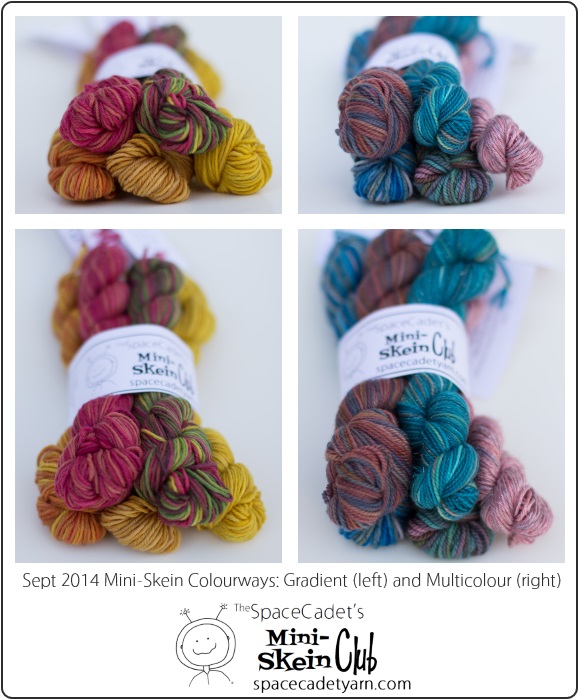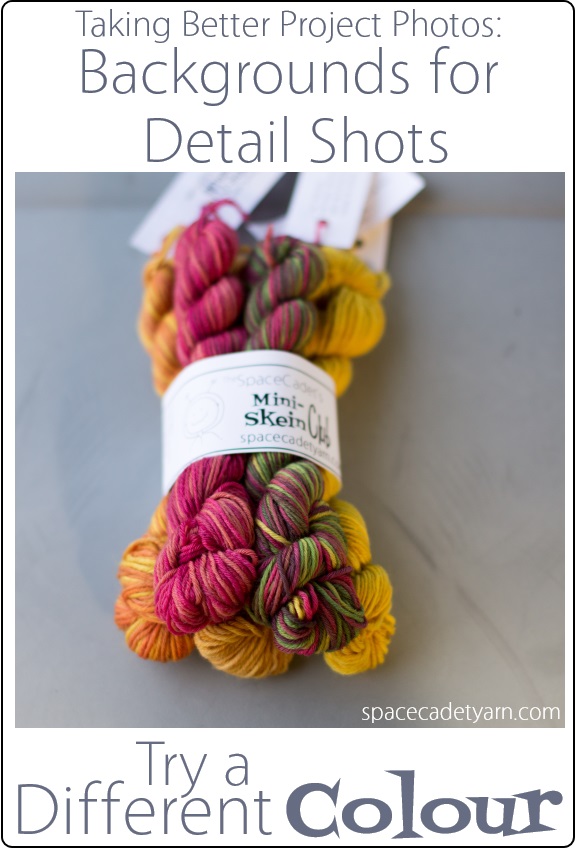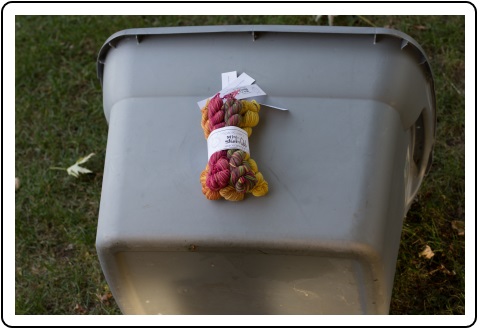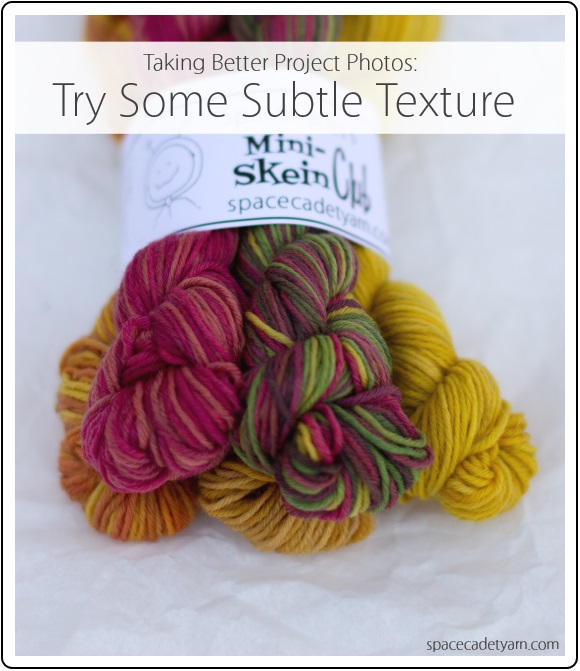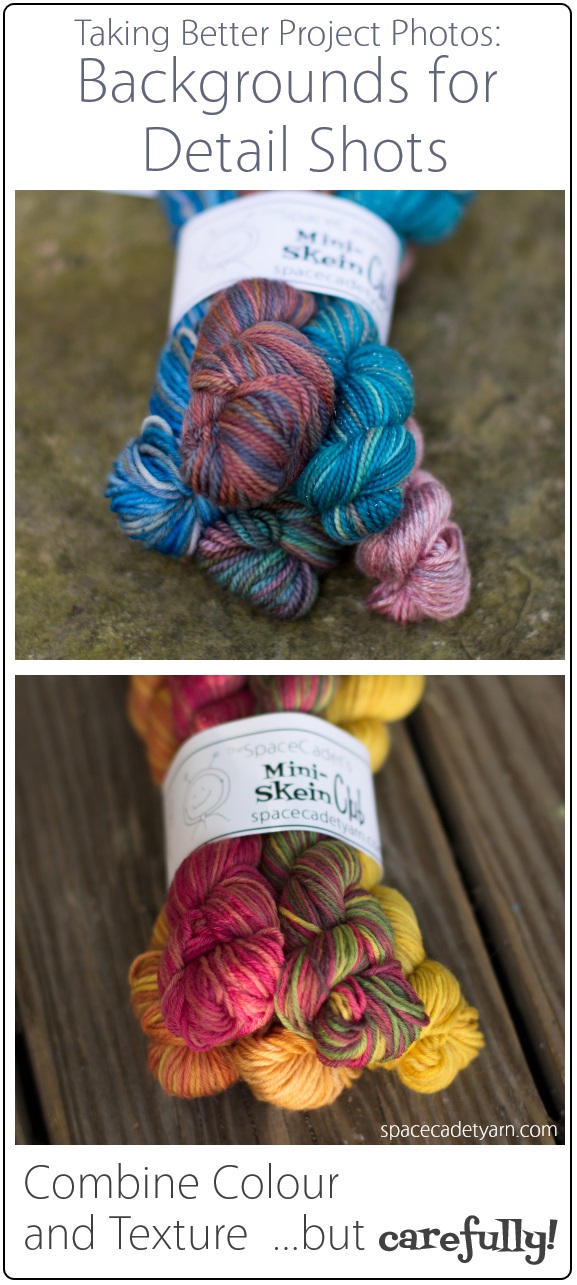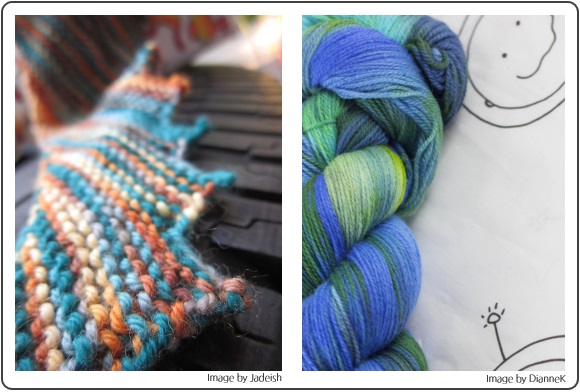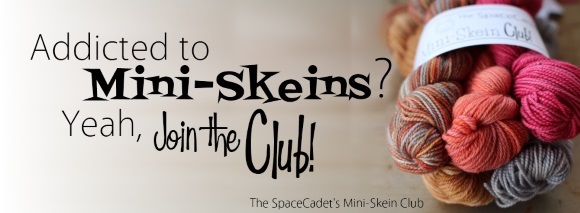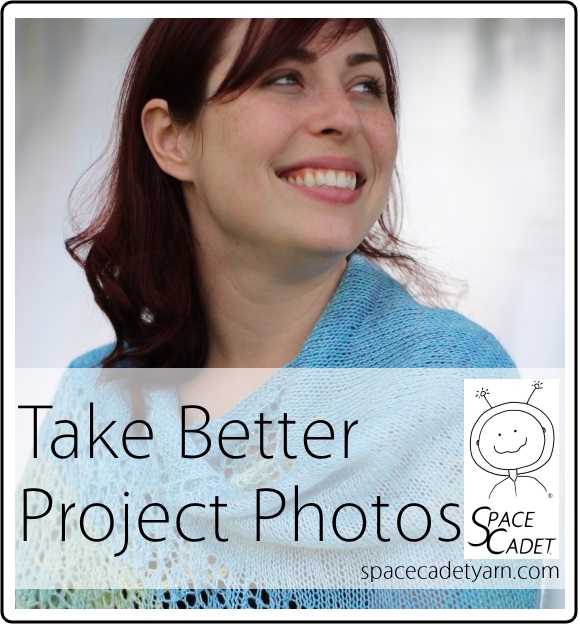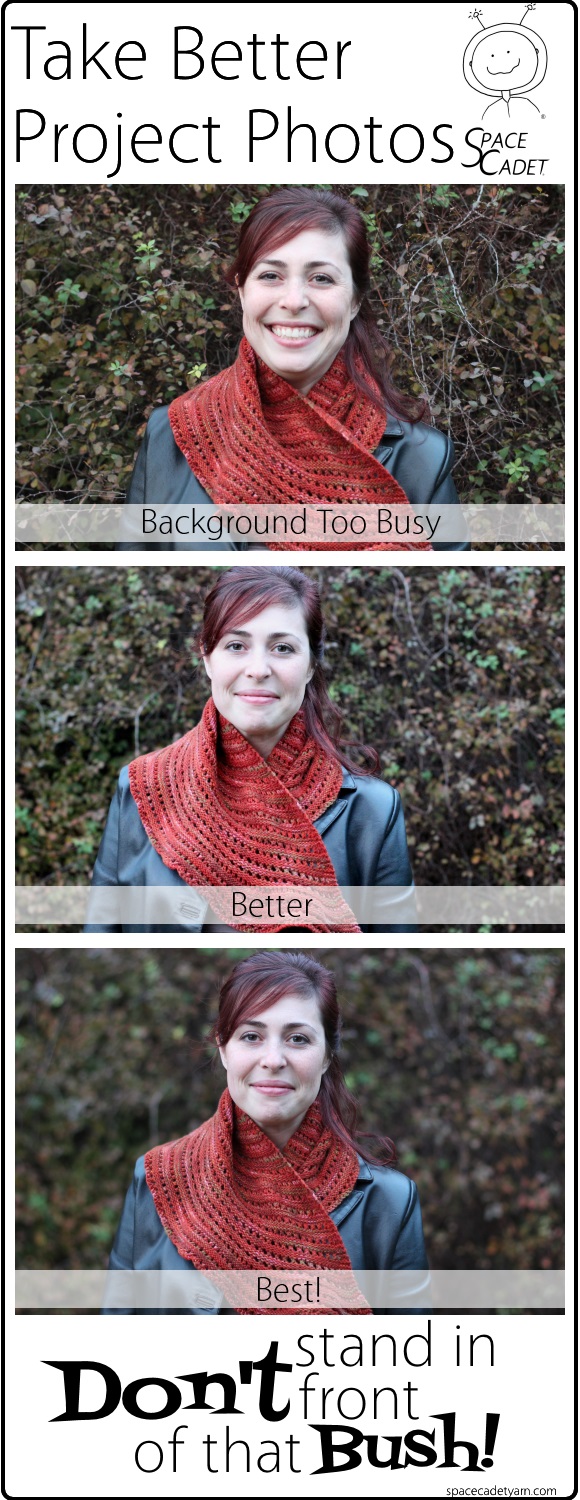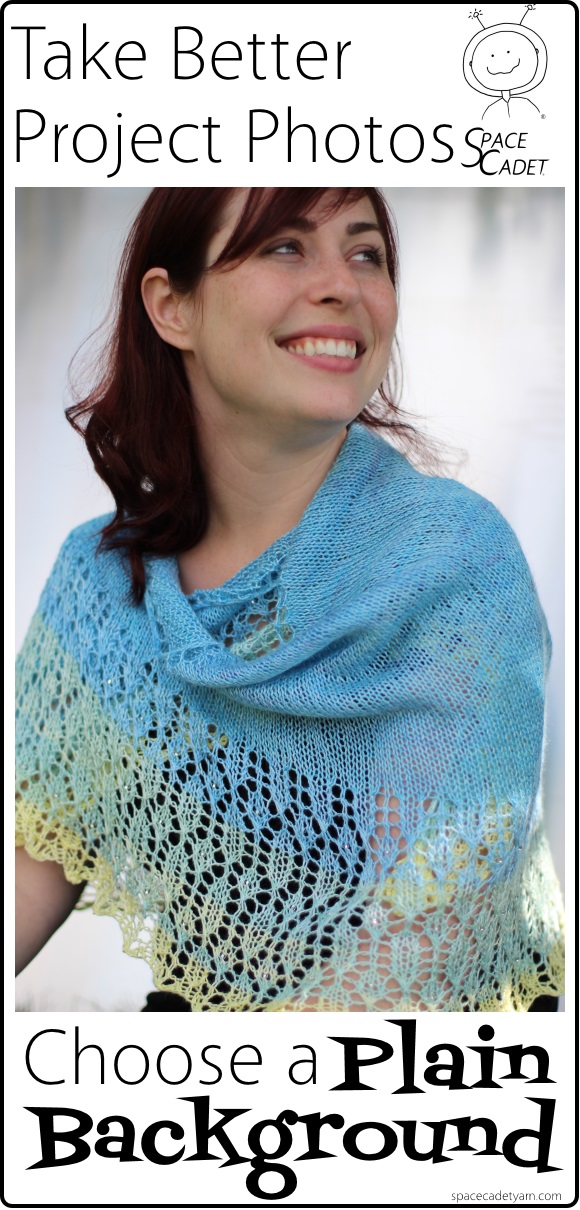In my previous post, I shared some great ideas for improving your project portraits by choosing backgrounds that really make your finished object shine. If you haven’t read it, click here — it’s amazing what a difference the right background can make!
But you want to take some detail shots too right? Because sometimes the things that make our project just amazing are in the details — the intricate stitchwork, the seam that you sewed so beautifully, the subtle stitch-by-stitch colour changes in the yarn. For those shots, you need to get your camera in close to your project and, to really show the details off to their best, the background you choose will make a huge difference.
We started the portrait-photo post with a pet peeve of mine (Don’t Stand in Front of that Bush!) and we’re starting this one with a pet peeve too — one I see all over Ravelry and that always gives me the sads…
Don’t Shoot on that Blocking Mat!
I know your project looks amazing when you finally get it blocked out and all the stitchwork opens up. I know you’re excited (and you should be!) and you just want to grab your camera and take photos now. Or maybe you don’t want to actually model it yourself (and that’s ok) but, please, put your camera down. To me, taking pictures on a blocking mat is a little like getting all dressed up for a family photo — you in your best outfit, your hair fabulous, you’re looking amazing — and then… wearing your house-slippers in the photo.
It’s the same with a blocking mat — that dull surface and the hundreds of pins are a total mood-killer for your photos. And the thing is, your stitchwork is going to look just as gorgeous once it’s dried and off the mat — even more gorgeous in fact, because you can lift it up and let the stitches really shine in the light and the breeze. So go ahead and love your project while it’s blocking, but wait to take the photos until you unpin it and set its beauty free!
Choose a Simple Background
Just as we discussed with project portraits, your eye gets confused about where to look when the background is cluttered or complicated — whereas a simple background will make your project really pop.
And here’s some great news: the simplest background is super easy and super cheap! So yesterday, I grabbed a bundle of the SpaceCadet’s September Mini-Skeins and, literally 30 seconds, I had a “studio” set up and snapped these images.
Don’t they look great? Clean, crisp, and professional. Want to see what the “studio” looked like? Ok, here ya go!…
It’s a piece of 75¢ posterboard propped up against a wall outside. That’s it! The sun provides amazing light, the posterboard keeps the picture clean and uncluttered, and by propping it up (instead of laying it flat), it creates a never-ending backdrop. Can you believe you can get such beautiful photos with something so simple and cheap? Try it — you’ll be amazed at the results!
And remember, this set-up is for your detail shots, so you’re not trying to fit your entire project spread out on the posterboard — it probably won’t be big enough for that. But if you use it when focus in on your lace edging, the collar, your beautiful seams, your stitches will pop and your project will look amazing!
Now, to take it up a level, let the smaller space encourage you to get creative with the way you display your work. Try folding your sweater up neatly as if it were on a shelf and take some snaps like that. Or instead of laying a scarf out flat, go for an accordion-fold to emphasise the colour progression. There are so many possibilities!
Try a Different Colour to Make Your Project Pop
Neutral is nice but sometimes white doesn’t do your project full justice. Just like we saw that darker backgrounds can work wonders for your project portraits, sometimes a background of a contrasting colour can make your project really pop. Working in a light coloured yarn? Try posterboard in black or gray so the stitches stand out. Warm colours jump off of purple or olive green. Cool colours can look amazing against dark spice shades. The best way to find out? Experiment! Grab your project and hold it against different colours to see what works. And be bold — the best combinations can be quite surprising!
Here I grabbed those same gradient Mini-Skeins and set them against a gray background. Do you see how much the colours of the bottom row jump out of the gray rather than the white? It’s an optical illusion — the colours are the same — but the contrast makes all the difference.
And do you want to see what this background actually was? I didn’t have any gray posterboard to hand, so I just popped them onto an old storage tub that was sitting in the grass! Sure, you can see a few scuff marks and imperfections, but the finished image looks really good, don’t you think?
Try a Little Texture — But Just a Little
Texture is another great option for enhancing detail shots, but it’s a wee bit tricky. Remember that a busy background confuses the eye and can detract focus from your project, so choose carefully. The best textures are subtle — not too detailed and fairly mono-chromatic.
For this image, I just crumpled up a piece of tissue paper and then spread it out on top of my white posterboard. The overall effect is still very neutral, but the tissue gives a little bit of subtle texture that adds interest without taking away from the main object.
Carefully Combine Colour And Texture
A carefully chosen combination of texture and colour together can create a wonderful effect too. Nature can provide these in abundance but, again, the emphasis is on carefully chosen. A project plonked down in some grass or stretched across a bush* will be competing for your eye’s attention with a hundred individual blades of grass or tiny leaves, and the effect will mostly be disappointing.
*Augh! That bush again!
Instead, go for a background where the texture is simple and the colour is complimentary to the project. Here, I set the Multicolour Mini-Skein bundle (top) on a large, flat rock in my garden, and I just love how it brings out the sublime ocean colours of the blue skeins — and yet makes the pink skein sing out loud. Then I set the Gradient Mini-Skein bundle (bottom) against the wood of my back porch. It’s true the texture in the grain is more pronounced, but it’s dark enough that it doesn’t overwhelm the yarn and the golds look just amazing against it, don’t you think?
Get Creative!
Ok, so now you have some great tricks up your sleeve, it’s time to get a little creative. The next time you’re on Ravelry, look past the projects and notice the backgrounds. Which ones work and which ones don’t? When you see a project picture that really jumps right out at you, take a moment to note the setting (I’m going to bet it’s not a blocking mat!). Is it plain? A little textured? An unusual colour?
And start looking at your surroundings and seeing new possibilities. Would your weathered wooden cutting board look good as a backdrop? How about the floor tiles in the hallway? Dianne always photographs her SpaceCadet stash against the pattern of her SpaceCadet project bag — and it looks both awesome and amazingly on-theme! And Jade made the super-funky choice of photographing her project on a tyre. I love that kind of creative thinking!
And just to get your creative juices flowing, let’s try this: Come on over to the SpaceCadet group and share your favourite close-up project photograph (click here). It can be one that you took awhile ago or a new one inspired by these tips.
Share with us why you like the background, or what you would do to change it. And then… tell me your best guess at what the background is for the photograph below. And I’ll give the first person to guess correctly free shipping on their next SpaceCadet order. Sound good? So get snapping — I can’t wait to see your photos!

